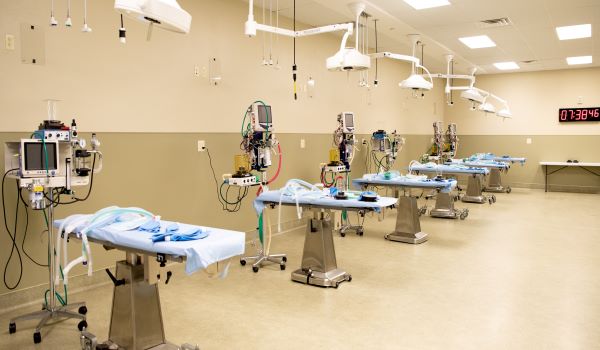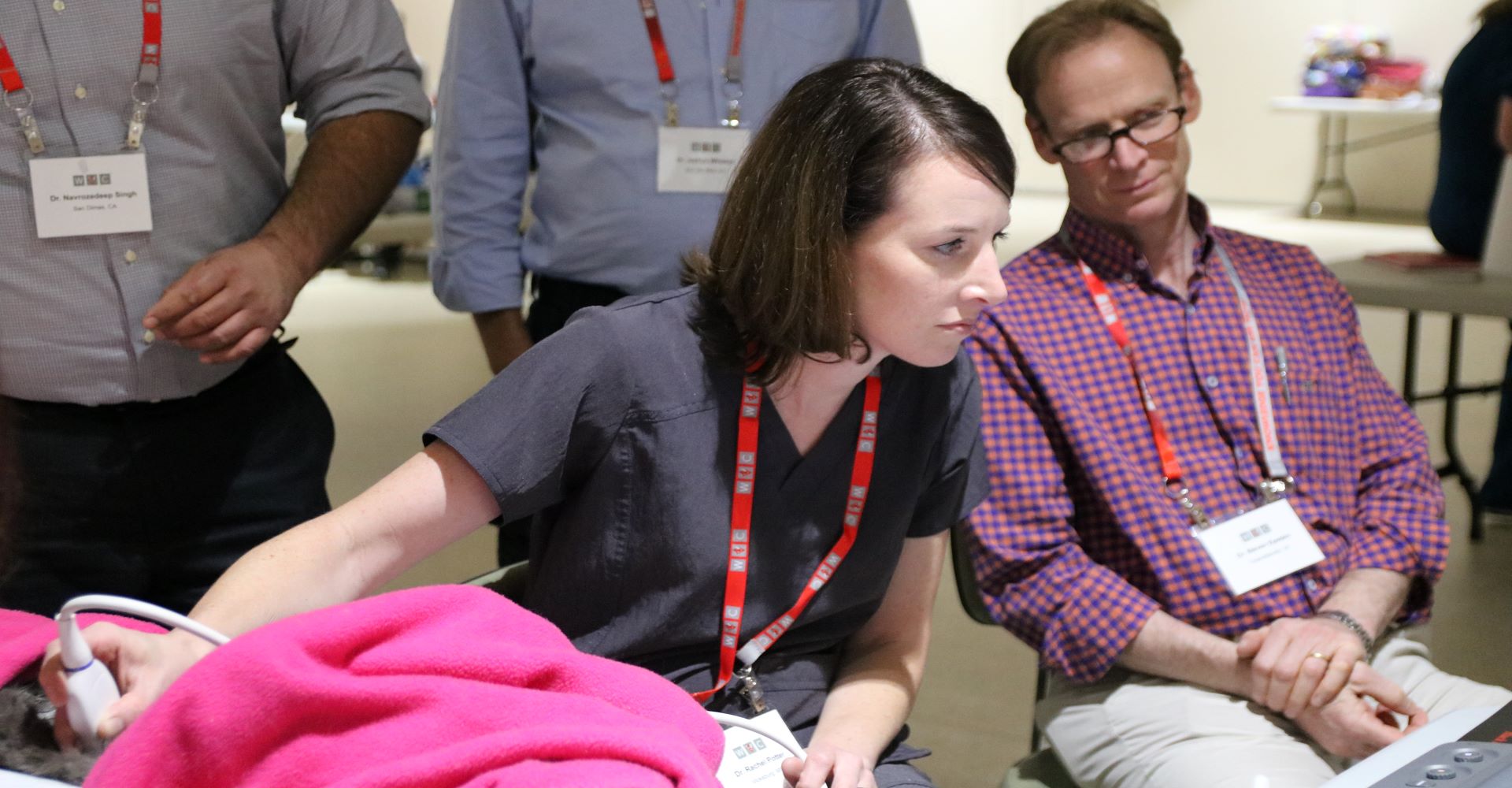Closing the Evidence-Practice Gap: Apply New Findings Faster with CE
Hands-on continuing education can play a significant role in distributing updated knowledge to medical professionals, helping narrow the...
4 min read
Abby Crimm : December 3, 2019 10:22:45 AM PST

There are many different formats available in the world of continuing education. What kind of continuing education program brings the most benefit to you and your patients?
Every healthcare professional knows that learning is a lifelong pursuit. The fact that continuing education (CE) activities in general increase your knowledge is self-evident, but not all continuing education is created equal.
In a world of ever-advancing technology, continuing education credits are increasingly available through online resources and media. While these great opportunities make earning the required credits more convenient, learning from hands-on, life-like scenarios better improves everyday practice skills and patient outcomes.
At Viticus Group, we see how interactive, hands-on instruction benefits thousands of healthcare professionals every year. Here are five of the reasons making the extra effort to attend a continuing education course at a hands-on lab is worth it.
#1: Improves Job Performance
The number one question many have when considering a veterinary CE or continuing medical education (CME) course is whether it will actually affect lasting improvements on performance. No one wants to waste time or money on something that isn’t effective.
A study that looked at 14 randomized controlled trials of formal didactic and interactive CME activities found a significant difference between interactive (or hands-on) and didactic forms of continuing education. The authors of the study report that the data shows evidence that “interactive CME sessions that enhance participant activity and provide the opportunity to practice skills can effect change in professional practice and health care outcomes.”[1] Based on a small number of well-conducted trails, they also claim that “didactic sessions do not appear to be as effective in changing physician performance.”
It makes intuitive sense. For most people, the best way to learn a new surgical technique, for example, would be to practice on a cadaver in a real-life environment. The best way to learn how to use a piece of innovative technology would be to receive instruction by an expert on that technology itself, not an online simulation or a lecture.
That new knowledge, then, would be immediately applicable to everyday practice and has a greater chance of making lasting change.
#2: Keeps You Current
The world of veterinary and human medicine is constantly changing, as well as the technology used to improve it. Maintaining an up-to-date knowledge of these changes can be the difference in the quality of life for a patient.
When choosing a continuing education course or program, looking for specific learning objectives helps make sure you are getting the latest instruction. Detailed learning objectives also make the benefits to your practice more clear to you and your medical director or practice owner. Investing in providing the most current care will set you and your clinic above the rest.
#3: Advances Your Career
Everyone knows that staying in the same spot, doing the same things, usually isn’t going to get you anywhere if you want to advance in your career. Practical skills and applicable knowledge learned from interactive continuing education not only makes you a valuable team member, but also allows you to discover new skills and passions that you can use to develop into your career path.
At Viticus Group, we’ve seen assistants and technicians become more utilized at their practices and more involved in community leadership, growing their career into something even more fulfilling than they initially dreamed. Organized medicine provides so many opportunities for education and support, and they often team up with continuing education programs to help improve the industry.
In the veterinary and human medical field, there’s a specialty and a niche for everyone to has the desire. Finding that niche often involves attending a continuing education event where you learn about fields you don’t have experience in yet. Quality continuing education is the place to try out new areas of study you’re interested in to further your career.
#4: Provides Platform to Meet New People
Hands-on CE cultivates relationships and learning that last a lifetime. Take the Veterinary Anesthesia Nerds Symposium for example. Tasha McNerny started out as a veterinary technician aspiring to specialize in anesthesiology, reaching out through texting and social media to colleagues wanting to learn more. It turned into a community of thousands who now have their annual symposium at the Viticus Center to learn the latest innovations in veterinary anesthesia.
Continuing medical education seems to be more effective when it not only focuses on job-specific skills, but also when it “provides intellectual stimulation and fosters personal growth.” The same study found that medical professionals thrive personally and provide better care when they are working in a supportive environment.[2]
In other words, it’s not just about the education—it’s about the environment. Passionate, driven professionals create the kind of environment you thrive in, and expanding your network (and your opportunities) fosters personal growth.
Hands-on continuing education attracts those kinds of people. It’s the network and the environment you need to open doors and elevate the standard of care. It gets you in contact with the experts in your field in low participant-instructor ratios, giving you face-to-face opportunities that other CE activities can’t.
#5: Leads to Better Patient Care
All in all, these factors come together to produce better patient care. And what better effect is there?
If you needed another reason to believe in the virtues of continuing education, here’s another study closely looking at the effectiveness of CME activities. It found that CME does improve physician performance and patient health outcomes. More specifically, CME leads to greater improvement in physician performance and patient health if it’s more interactive, uses more methods, involves multiple exposures, is longer, and is focused on outcomes that are considered important by physicians.
Next time you find yourself needing continuing education credits, keep in mind the different formats of CE programs and what a more hands-on approach can do for you, your career, and your patients.
[1] Davis D, O'Brien MAT, Freemantle N, Wolf FM, Mazmanian P, Taylor-Vaisey A. Impact of Formal Continuing Medical Education: Do Conferences, Workshops, Rounds, and Other Traditional Continuing Education Activities Change Physician Behavior or Health Care Outcomes? JAMA. 1999;282(9):867–874. doi:https://doi.org/10.1001/jama.282.9.867
[2] McMahon GT, Skochelak SE. Evolution of Continuing Medical Education: Promoting Innovation Through Regulatory Alignment. JAMA. 2018;319(6):545–546. doi:https://doi.org/10.1001/jama.2017.19954
Learn More!
Check out the new courses coming up in 2020 at Viticus Academy and WVC Academy, taught by experts in state-of-the-art lab facilities!

Hands-on continuing education can play a significant role in distributing updated knowledge to medical professionals, helping narrow the...

The effect continuing education has on healthcare providers, especially during a pandemic, is astronomical. If you don’t believe me, just listen to...

How important is continuing education to a veterinary practice, anyway? What resources are out there to help you? Just ask Mary Berg, whose words of...